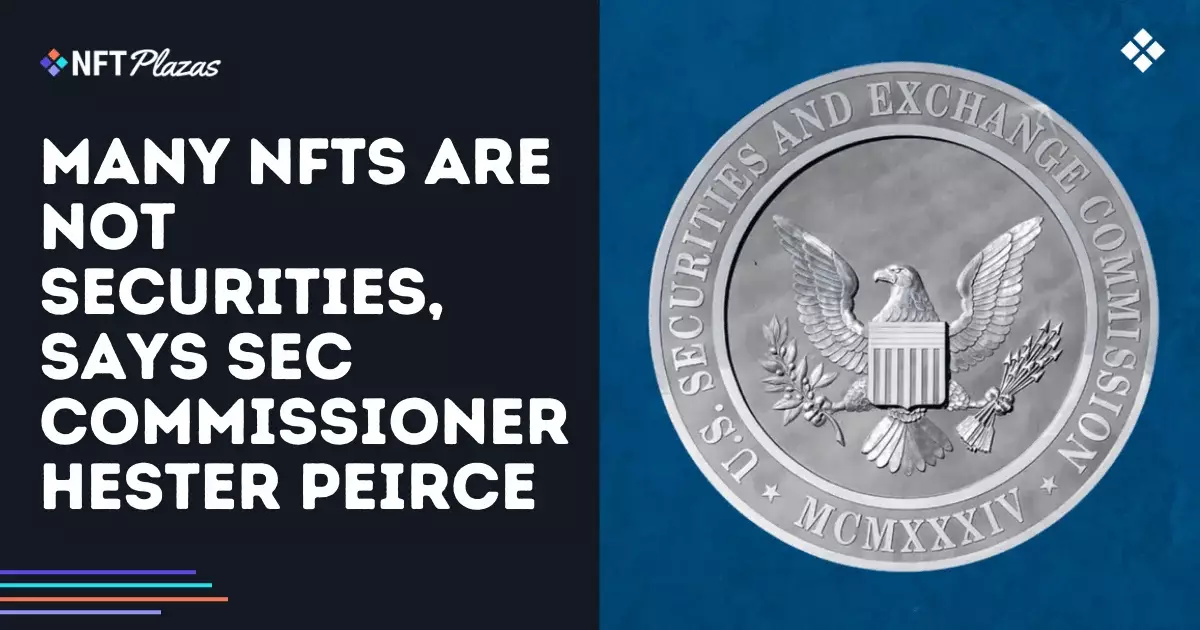In a recent address at the SEC Speaks 2025 event in Washington, D.C., Commissioner Hester Peirce made headlines by asserting that a vast majority of non-fungible tokens (NFTs) do not fit the description of securities according to U.S. law. This assertion comes amidst a swirl of confusion and enforcement actions taken by the SEC against various crypto projects, leaving many participants in the NFT space feeling somewhat adrift. The clash between innovation in the digital realm and the imposition of regulatory scrutiny reveals not just a rift but an alarming lag in understanding how these assets should be classified.
Peirce’s observations shed light on the crux of the matter: while many NFTs indeed do not align with the traditional securities framework, there exists a caveat that could turn the playing field on its head. If NFTs are marketed with the promise of profits reliant on the skills of a managing entity or central authority, they may very well traverse into the territory of securities. This nuanced differentiation, however, raises more questions than answers about what constitutes responsible marketing and disclosure.
The Regulatory Quagmire: Controlled Chaos
It is troubling to note that the SEC’s current enforcement-focused strategy can feel more like a game of cat and mouse than a proactive regulatory framework. Ignoring the pressing need for clear guidance, the SEC appears content to wield its enforcement powers without articulating a comprehensive policy for the fast-evolving terrain of digital assets. In doing so, it is inadvertently promoting an atmosphere of uncertainty where innovators are left to grapple with ambiguous definitions and potential legal pitfalls.
Peirce rightly criticized this reactive stance, advocating for an approach that emphasizes the nature of how assets are presented and sold, rather than their categorizations alone. This insight is crucial because growth in the NFT sector demands predictability, which is currently undermined by the absence of clear rules.
Safe Harbor: A Beacon of Hope or a Crutch?
At the heart of Peirce’s proposals lies the concept of a Safe Harbor framework. This initiative aims to grant crypto projects a grace period—potentially three years—during which they wouldn’t be bogged down by the weight of securities regulations, provided they meet adequate disclosure and investor protection measures. While this sounds promising, it raises critical concerns: will this Safe Harbor serve as a genuine opportunity for innovation, or will it simply become a crutch for those unwilling to innovate beyond existing paradigms?
If adopted, such a framework could allow creators to cultivate their projects and achieve decentralization without the daunting pressure of immediate regulatory compliance. However, it remains to be seen whether the SEC will acknowledge the importance of fostering innovation through this proposal, or if they will allow fear of enforcement to stymie a burgeoning sector.
The Call for Clarity: More Than Just Words
One cannot overlook the urgent call for clarity regarding NFTs and similar digital assets. As Peirce herself noted, the absence of formal guidance from the SEC leaves stakeholders in a lurch, navigating without a compass. We are at a critical juncture where clear, actionable regulatory definitions are paramount. The chaos in the current system serves neither investors nor innovators and could ultimately impair the United States’ competitive edge in the fast-growing global digital economy.
While we wait for definitive regulations from the SEC, superficial dialogues and unclear categorization may pave the way for stifling innovation and growth. Having insightful leaders like Peirce vocalize the need for better regulations is a step in the right direction, but the industry deserves more than mere rhetoric; it craves solid frameworks that can empower rather than restrain.















Leave a Reply